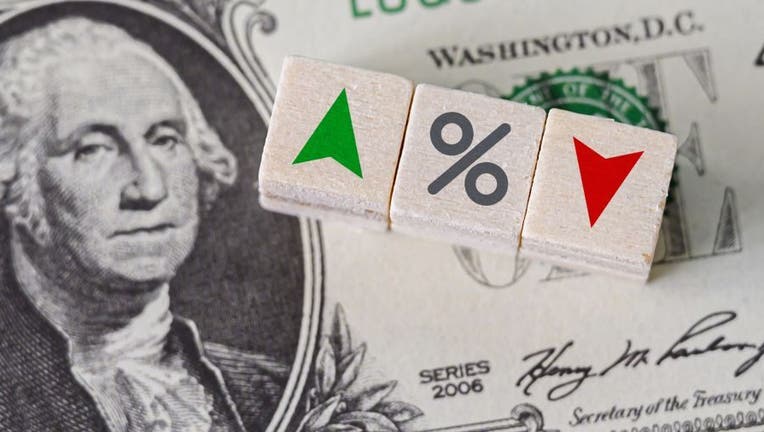How do interest rates affect debt?

Lower interest rates could reduce your costs, but it may not be automatic. (iStock)
Interest rates are a representation of the cost of borrowing money. While many factors go into determining interest rates, we’re seeing record-low mortgage refinance rates, personal loan rates, student loan refinance rates and more.
Lenders use several factors to determine interest rates, some of which have been impacted by the coronavirus pandemic. For example, the Federal Reserve cut its federal funds rate, which impacts the prime rate lenders charge their most creditworthy customers, to near zero in March and plans to keep it at that level through 2023.
Also, inflation has been lower than 2% for years, which has driven down long-term mortgage rates. Depending on the type of loan and interest rate you have, it’s important to know if and how you can take advantage of the current interest rates. Here's what you need to know.
How interest rates can affect your debt
There’s no guarantee that you can get a lower interest rate on debt than you’re currently paying. But, if you can, even a small decrease can make a huge difference.
For example, let’s say you have a 30-year mortgage with $250,000 owed and a 4.5% interest rate. In this scenario, your monthly payment would be $1,267, and you’d ultimately pay $206,017 in interest over the life of the loan.
However, if you’re eligible for a 3.5% mortgage refinance rate, that would drop your monthly payment to $1,123, and your total interest charges to $154,140—that’s a savings of $51,877.
Based on the current mortgage and refinance rates, it may be a good time for you to refinance. To see how much you could save on your monthly mortgage payment today, crunch the numbers and compare loan rates and mortgage lenders using Credible's free online tool.
HOW TO REFINANCE YOUR MORTGAGE
The same goes for other forms of credit. For instance, with $30,000 in student loan debt over 10 years and an average interest rate of 5%, refinancing your rate to 4% would drop your monthly payment by $14, and save you $1,735 in interest.
You can shop around and view student loan refinance rates from multiple lenders here.
DON'T IGNORE LOW STUDENT LOAN RATES — WHY YOU SHOULD REFINANCE NOW
Finally, personal loan rates have also dropped as a result of a lower prime rate in 2020. On average, these loans already carry lower interest rates than credit cards, but you could now save even more by using a personal loan to consolidate credit card debt.
Visit Credible to check out personal loan rates based on your credit profile.
How to get the best rates
Lenders use risk-based pricing to calculate interest rates. This means that they consider several factors to determine how much you’re at risk of defaulting. Some of those include your:
Credit score
Credit report
Income
Employment history
Current debts
Loan type
Two of the most important factors are your credit score and debt-to-income ratio. Check your credit score before you apply for a loan to see where you stand—the higher your score, the better your odds of scoring a low rate. If your score needs some work, get a copy of your credit report to pinpoint which areas of your credit history need to be addressed.
Your debt-to-income ratio represents the percentage of your gross monthly income that goes toward debt payments. For example, if you make $5,000 per month and pay $1,500 per month on your mortgage, student loans, credit cards and an auto loan, your debt-to-income ratio would be 30%.
A higher debt-to-income ratio may indicate that you’re stretched thin financially, and adding another debt into the mix could make it more challenging to keep up with your payments.
How to increase your credit score fast
Here are some tips for increasing your credit score and decreasing your debt-to-income ratio:
Review your credit report for errors and dispute inaccurate information with the national credit bureaus.
Get caught up on past-due payments and make it a priority to pay your bills on time going forward.
Pay down credit card balances to reduce your credit utilization ratio and debt-to-income ratio.
Avoid taking on new debts unless absolutely necessary.
Depending on your situation, improving your credit and reducing your debt-to-income ratio can take time. But if it helps you save on refinance rates, the effort is well spent.
HOW STUDENT DEBT CAN AFFECT YOUR CREDIT SCORE
Today's interest rates
Interest rates can vary by lender, state and borrower. But seeing the average rates can give you an idea of what to expect as you shop around. Here are some current interest rates for October 2020:
30-year mortgages: 2.87%
15-year mortgages: 2.37%
Student loans: 7.64%
Personal loans: 9.34%
Credit cards: 14.58%
Note that if you’re refinancing a mortgage loan, student loan or personal loan, the interest rates for new loans are generally similar to refinance loans. If you can find an interest rate on a new loan that’s lower than what you’re paying now, it may be worth investigating if a refinance is the right move. You can start the process of comparing options at Credible.
CREDIT CARD VS. PERSONAL LOAN: WHICH ONE IS A BETTER OPTION?

